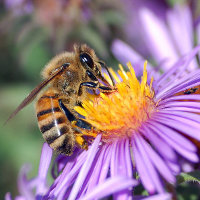Home » Regions » North America » Great Plains » Temperate Prairies » Northern Glaciated Plains
Northern Glaciated Plains
Last updated: April 13th, 2025
To check where a specific point lies, you can look it up in our Ecoregion Locator.
↑Map Legend & Subregion List
This list will help you navigate the regions in case you have problems with viewing or clicking the interactive map above.
| Name | † | Color on Map | EPA Code‡ |
| Pembina Escarpment | ○ | 46a | |
| Turtle Mountains | ○ | 46b | |
| Glacial Lake Basins | ○ | 46c | |
| Glacial Lake Deltas | ○ | 46d | |
| Tewaukon/Big Stone Stagnation Moraine | ○ | 46e | |
| End Moraine Complex | ○ | 46f | |
| Northern Black Prairie | ○ | 46g | |
| Northern Dark Brown Prairie | ○ | 46h | |
| Drift Plains | ○ | 46i | |
| Glacial Outwash | ○ | 46j | |
| Prairie Coteau | ○ | 46k | |
| Prairie Coteau Escarpment | ○ | 46l | |
| Big Sioux Basin | ○ | 46m | |
| James River Lowland | ○ | 46n | |
| Minnesota River Prairie | ○ | 46o |
† Status: ✓ = Complete ○ = Needs Image … = Incomplete ∅ = Stub Only
‡ This code refers to the US EPA's Level 4 ecoregion codes for the continental U.S., see here.
↑Progress
Partially Complete | With Images | Complete w/ Images |
Get involved! You can help our ecoregion articles progress faster. Help us find photos of these regions. Contact us if you have any additions or corrections to any of these articles. You can also donate to support our ongoing work.
↑About the Northern Glaciated Plains
The Northern Glaciated Plains, called the Aspen Parkland in some documents, are a long, narrow, curved region covering a band through southern Alberta, east into southern Saskatchewan, southeast through Manitoba and North Dakota, and into eastern South Dakota and slightly into westernmost Minnesota. This region is the coldest, northernmost portion of the North American Great Plains that were naturally covered in open grasslands.The climate here is towards the dry end of a humid continental climate, bordering a mid-latitude steppe climate. Temperatures vary to the extreme.
Plant Lists & In-Region Search
List Native Plants - List All Plants
Warning! This region extends outside the lower 48 US. We have only completed range maps for all plants in the lower 48 US; these lists and searches may thus have omissions for species which only occur in the portion of this region outside the lower 48 US.


